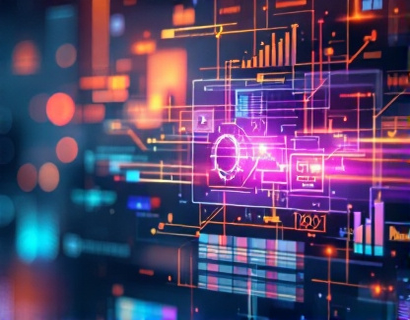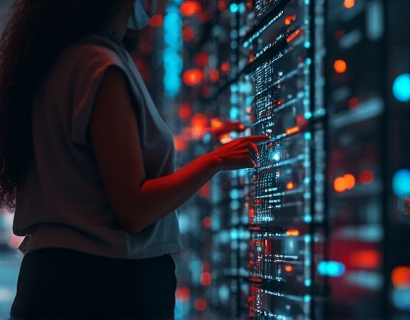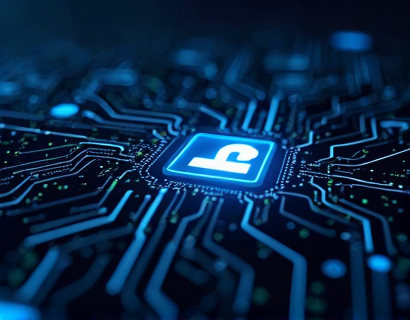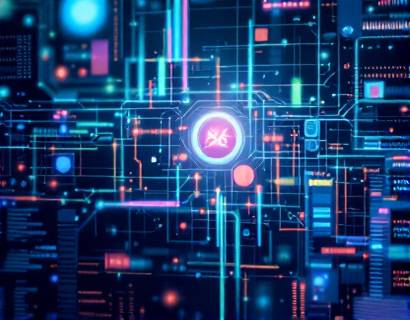Unlocking the Potential of Crypto and AI: A Synergistic Approach to Digital Engagement
The intersection of cryptocurrency and artificial intelligence represents a groundbreaking frontier in digital innovation. This synergy is not just about combining two powerful technologies but about creating a new paradigm for online interactions that are more secure, personalized, and engaging. For tech enthusiasts and professionals, understanding this synergy is crucial to staying ahead in the rapidly evolving tech landscape.
The integration of blockchain technology and AI is transforming the way we interact with digital content and services. Blockchain provides a decentralized, transparent, and secure framework, while AI enhances user experiences through intelligent, adaptive, and personalized interactions. Together, they offer a robust solution for building trust, ensuring security, and delivering tailored content to users.
Enhancing Security with Blockchain
One of the primary advantages of using blockchain in digital platforms is its inherent security features. Blockchain's decentralized nature eliminates single points of failure, making it extremely difficult for hackers to compromise the system. Each transaction is recorded in a block and linked to the previous block, creating an immutable chain of data. This ensures that once data is recorded, it cannot be altered without consensus from the network, providing a high level of security and trust.
In the context of crypto and AI, this security is paramount. As AI systems often require access to sensitive user data, the use of blockchain can ensure that this data is stored and transmitted securely. Smart contracts, self-executing contracts with the terms directly written into code, can automate and enforce agreements without the need for intermediaries, further reducing the risk of fraud and errors.
Personalization Through AI
AI's ability to analyze vast amounts of data and derive meaningful insights makes it an ideal partner for enhancing user experiences. By leveraging machine learning algorithms, AI can understand user preferences, behaviors, and patterns, allowing for highly personalized interactions. This personalization extends to content recommendation, user interface customization, and even predictive analytics to anticipate user needs.
For instance, in a digital ecosystem powered by AI, a user's browsing history, search queries, and interaction patterns can be analyzed to deliver content that is most relevant to them. This not only improves user satisfaction but also increases engagement and retention. AI-driven chatbots and virtual assistants can provide instant, context-aware support, further enhancing the user experience.
Creating Engaging User Experiences
The combination of blockchain and AI can lead to the creation of highly engaging user experiences. Blockchain ensures that user data is secure and ownership is maintained, while AI provides the intelligence to make these interactions meaningful and enjoyable. This dual approach can revolutionize various aspects of digital engagement, from gaming and social media to e-commerce and education.
In gaming, for example, blockchain can be used to create decentralized gaming platforms where players own their in-game assets as NFTs (non-fungible tokens). AI can enhance the gaming experience by generating dynamic content, adapting difficulty levels based on player skill, and creating more immersive environments. This not only increases player engagement but also opens up new monetization opportunities for developers.
In social media, AI can curate feeds based on user preferences and blockchain can ensure that user-generated content is verified and rewarded. This creates a more authentic and engaging platform where users feel valued and incentivized to participate actively.
Use Cases in Various Industries
The synergy of blockchain and AI is not limited to entertainment and social media. It has far-reaching applications across various industries, each benefiting from the unique strengths of both technologies.
In finance, blockchain provides a secure and transparent way to handle transactions, while AI can optimize trading strategies, detect fraud, and provide personalized financial advice. In healthcare, blockchain can secure patient data and ensure compliance with regulations, while AI can analyze medical records to provide personalized treatment plans and predict patient outcomes.
The real estate sector can benefit from blockchain-based property records and AI-driven property recommendation systems. In supply chain management, blockchain ensures transparency and traceability, while AI can optimize logistics and predict demand.
Building a Future-Proof Digital Ecosystem
To fully leverage the potential of blockchain and AI, it is essential to build a digital ecosystem that is both future-proof and user-centric. This involves creating platforms that are scalable, interoperable, and adaptable to emerging technologies. Ucosystem apps and services, powered by crypto and AI, are designed with these principles in mind.
These platforms prioritize user privacy and data ownership, ensuring that users have control over their information. By using blockchain, these platforms can offer decentralized services that are resistant to censorship and manipulation. AI-driven features ensure that the user experience is seamless, intuitive, and highly personalized.
The development of such ecosystems requires a collaborative approach, involving developers, researchers, and industry experts. By fostering a community of innovators, we can drive the adoption of these technologies and create a more inclusive and equitable digital world.
Challenges and Considerations
While the potential of blockchain and AI is immense, there are several challenges and considerations that must be addressed. One of the primary challenges is the technical complexity involved in integrating these technologies. Developers need to have a solid understanding of both blockchain and AI to create effective solutions.
Another challenge is the regulatory landscape. As these technologies are still relatively new, regulations are evolving and can vary significantly across different regions. Compliance with these regulations is crucial to ensure the legal and ethical use of blockchain and AI.
Scalability is also a significant concern. Blockchain networks, particularly those using proof-of-work consensus mechanisms, can face scalability issues due to their energy consumption and transaction processing speeds. However, the development of more efficient consensus algorithms and layer 2 solutions is addressing these concerns.
Conclusion
The synergy between blockchain and AI represents a transformative force in the digital world. By combining the security and transparency of blockchain with the intelligence and personalization of AI, we can create more secure, engaging, and user-centric digital experiences. For tech enthusiasts and professionals, embracing this synergy is essential to stay at the forefront of digital innovation.
As we continue to explore and develop this powerful combination, the possibilities are endless. From enhancing user experiences in gaming and social media to revolutionizing industries like finance and healthcare, the impact of blockchain and AI is set to redefine the digital landscape. By staying informed and adaptable, we can harness these technologies to build a better, more connected future.










































